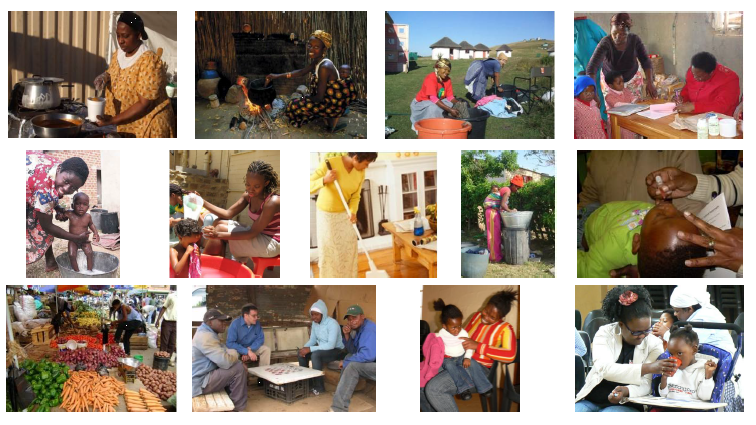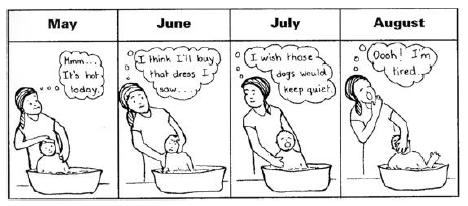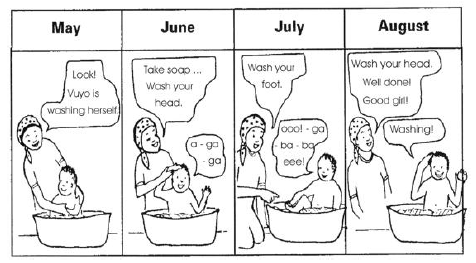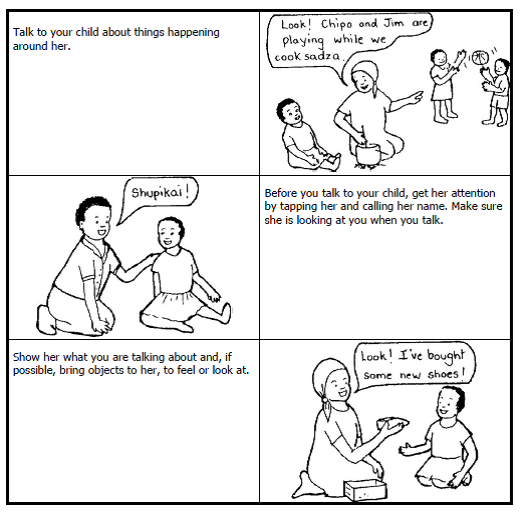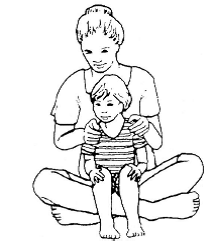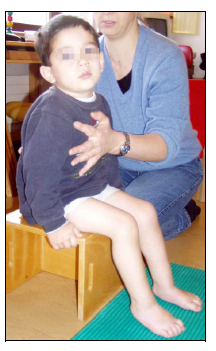Module 5: Everyday Activities
Page Outcomes[edit | edit source]
When you have finished this workshop, you should have a clearer understanding about:
- How to use everyday activities to develop your child with cerebral palsy.
- You should be able to explain this to others in your family or community.
Introduction[edit | edit source]
A carer is the most important caregiver for a child with cerebral palsy. Think about the time that is spent every day with the child, doing everyday things with her.
Here is a list of some everyday activities:
- Dressing the child
- Cooking, cleaning, and doing the washing going on an outing
- Toileting the child feeding your child
- Giving the child medication helping her get to sleep
- Visiting friends
- Playing with the child going to the clinic…
This is what the child needs to learn:
- Moving and balancing, using her hands,
- Communicating and interacting,
- Learning to be as independent as possible in self care activities, relating to others,
- Thinking and playing,
- Moving from place to place.
- With all the washing and feeding and dressing and giving medication and other things that you have to do with your child daily, you may already be very busy and feel quite stressed. And you may be caring for other children too.
A common thought is when the carer will find the time and energy to do a lot of exercises to help the child develop.
All of these daily things need to be done with the child anyway. So if they can do them in such a way that they are stimulating the child at the same time, this will help the child a lot with her development.
We will now learn how you can use these everyday activities to help your child develop. Look at these picture strip stories:
uMama KaSive:
This story demonstrates how to communicate with a child in an everyday situation. We first discussed this in our session about communication.
Look at these pictures again. They illustrate some of the things that we discussed about helping a child learn to communicate.
Notice how Vuyo‟s mother in the second bathing picture strip uses these ideas to help her child to learn to communicate.
So far, we have concentrated on only one skill – communication. We now need to look at the other parts.
Movement[edit | edit source]
The caregiver is helping the child:
- to sit by holding her in a helpful position while she moves her arm to reach up to her head.
- by encouraging her to balance while moving her limbs. (In the top row, the caregiver always holds on to her child, as she has never become aware, or given the child opportunity, to learn some balancing for herself).
Using her Hands
- The caregiver involves the child in the washing by helping her to hold the soap or wash cloth
Social and Emotional
- The child is learning a self-help skill, bathing. Over the months, this child is learning to bath herself, with just the amount of help and encouragement she needs on each occasion.
Thinking and Playing
- The child is playing and having fun while learning.
- The caregiver first performs the activity but involves her by communicating what she is doing - > then she involves the child by helping the child to do it with her - > then she lets the child do more by herself and only points out what is needed -> then makes the request and stands back while the child does it herself.
Summary
A helpful position makes it easier for a child to be more involved with everyday activities. She may be able to look around and watch what is happening in the room; or it may become easier to communicate with others. She can also use her arms more easily during activities
Using a helpful position during everyday activities[edit | edit source]
In Module 3 we learned about positions that can either help or hinder a child‟s development. To refresh your memories take a look at Module 3. Now we are going to look at how to support each joint in turn:
Shoulders:
|
Chest
|
